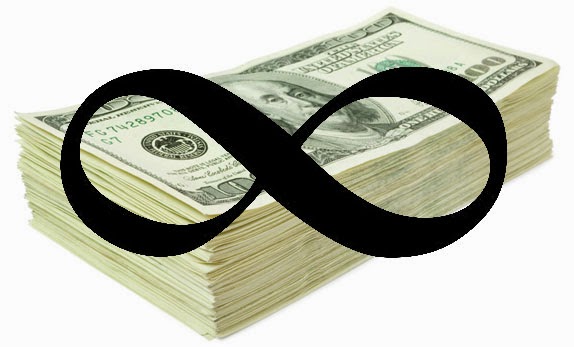by Garrett B. Gunderson
Some of the most frequent questions we get at Freedom FastTrack have to do with infinite banking. The financial strategy, which leverages the living benefits of cash value life insurance, was created by Nelson Nash and is detailed in his book Becoming Your Own Banker. Other popular books on the subject include Bank on Yourself by Pamela Yellen, The Banking Effect by Dan Thompson, Prescription for Wealth by Tom McFie, and Live Your Life Insurance by Kim Butler.
I would characterize my attitude toward infinite banking as “cautiously positive.” I’ve personally interviewed Nelson Nash twice by flying him to Utah. I’ve ran hundreds of infinite banking calculations using financial software and consulting financial software developer Todd Langford. I’ve even used the concept in my own life.
The problem with the strategy is that most people who do it or want to do it ignore the larger context of their full financial blueprint. It is frequently sold as a magic bullet. It tends to be a classic case of, “When all you have is a hammer, everything looks like a nail.”
The truth is that it’s just one strategy and technique surrounding one product. And as you frequently hear me preach, strategies are only as useful and profitable as the people executing them. Infinite banking is a one-trick pony that can be useful in certain circumstances for certain people, but it’s not for everyone and it doesn’t solve every financial problem.
To echo another theme I stress, if you’re asking whether or not you should use the strategy, the obvious answer is that you shouldn’t because you’re not educated enough yet. When you know enough about the strategy, you’ll know whether or not it’s appropriate for you, and how to execute it to fit within your particular financial blueprint and meet your specific needs.
So let me give a brief overview of the strategy, then I’ll reveal its blind spots and pitfalls and explain how to use it appropriately.
What is Infinite Banking?
In concept, the strategy is simple: You use your whole life insurance cash value essentially as a line of credit. Instead of paying banks interest when you finance cars or other purchases, you pay that money back into your policy and essentially to yourself.
This is done by funding dividend-paying, equity-building permanent life insurance. Once your policy is funded enough to make a major purchase, you utilize your cash value, take out a policy loan to make the purchase, then make “payments”—with interest—back to your own life insurance policy.
The cash value of permanent life insurance is referred to as a “living benefit,” because you can access it throughout your life. Whereas term life insurance provides a death benefit only, permanent life insurance offers living benefits, such as the cash value, tax-free growth and tax-free withdrawals (under specific guidelines), liquidity, dividends (on certain policies), and liability protection (in most states).
The strategy is smart, to be sure. Consider a five-year, $20,000 auto loan at 7 percent interest. On that loan your monthly payment would be $396.02. At the end of five years, you’ll have paid $3,761.44 in interest alone. Why not recapture that interest to build your own wealth, rather than padding bankers’ accounts? By the time you pay off the car, instead of just having a dramatically-depreciated asset, you’ll have the car, eventually you can build a way to have your $20,000 restored, and you can even have an additional $3,761 (not fully considering the interest that the insurance company may charge you on the borrowed money).
So what could possibly be wrong with the strategy?
Problem #1: Insurance Protection Comes First
The trick to making infinite banking work as quickly and effectively as possible is typically getting a low amount of insurance coverage (face value, or death benefit), then max out your premiums (also known as over-funding the policy). Remember that the goal is to build up your cash value. The focus is on the living benefits, not the death benefit.
But fully protecting your human life value with the proper death benefit amount should take precedence over any living benefit. Infinite banking makes the cash value the main benefit of permanent life insurance and overshadows the importance of the death benefit.
Before you even consider infinite banking, you first need to maximize your insurance protection. That is the primary and most important purpose of life insurance. Living benefits are nice, and in most cases I highly recommend permanent life insurance with living benefits over term insurance. But they should be viewed in their proper context as supplemental benefits, not the primary benefit.
In fact, before you even consider the type of insurance you should buy, you first need to understand how much death benefit to have. Your amount of life insurance to protect your economic value (replacement of income) is the primary consideration to drive all decisions regarding the type you purchase.
This is why I don’t always advocate whole life insurance 100 percent of the time. I’ve seen too many cases where insurance salesmen sold permanent policies people couldn’t afford, and who then lost their policies because they couldn’t fund them. Just as it’s a problem to get too little insurance coverage, it’s also damaging to get too much whole life insurance.
Focusing on death benefit first avoids problems like this. Some people may purchase convertible term insurance now to get the proper amount, then convert it to permanent insurance as their cash flow situation improves. (HINT: make sure your term insurance is convertible and with a company that has whole life insurance).
This is another way to say that a person’s comprehensive financial blueprint should govern financial decisions, which leads me to my next point.
Problem #2: Lack of Context
Infinite banking, if right for you, should be just one piece of a much larger puzzle. It shouldn’t be the one thing you implement at the expense of other important things in your life.
Your complete financial blueprint should be created first, which is driven by your vision and objectives. Once that’s created, you can then consider strategies for executing your blueprint, and infinite banking may play an important role in that.
Also consider if you’re properly managing cash flow in your business. For example, loans with a low cash flow index (high payment in relationship to a low balance loan) may be more important to pay off in order to free up the cash flow to properly fund your life insurance.
It is also important to take into consideration business expansion and growth. Do you want to use your capital to expand your company?
Considerations like these take precedence over infinite banking or other strategies. In some cases, it wouldn’t make sense to sock away tons of money in a whole life insurance policy for two to seven years, when that money would be better served by growing or stabilizing your business.
It is detrimental funding your life insurance without taking into consideration all your other insurance coverage, including disability insurance, medical insurance, and auto, homeowners, and liability insurance.
Again, the bottom line is that your financial blueprint must be created before you consider infinite banking. This creates the context for any financial strategy.
The Right Way to Use Infinite Banking
In the right context, I’m a proponent of infinite banking. First, secure the proper amount of insurance coverage, using whatever type of insurance that makes sense for your objectives and cash flow. Second, create your financial blueprint to establish context for any financial or investment strategy, including infinite banking.
And finally, educate yourself on infinite banking to the point where you don’t have any reasons left ask anyone whether or not it’s right for you.
At that point, if you decide it works for you, then by all means execute the strategy. Work with the right agent to choose the right policy for you that 1) you can commit to and stay with 2) provides the greatest benefits, and 3) is structured properly.
Then, fund your policy with consistency plus deposit bigger amounts when you have any windfall of money (being careful not to create a MEC, modified endowment contract). In most cases it takes a few years during the capitalization phase is required before your cash value is high enough to really work with.
Understand that infinite banking is a long-term strategy that requires patience and discipline. It’s not a quick fix or a universal solution.
It’s a great strategy as far as it goes, but it doesn’t go as far as most insurance salesmen who promote the strategy would lead you to believe.
Lastly, I mentioned having the rest of your financial blueprint on a solid foundation. Go to www.freedomfasttrack.com/cfw in order to find out where your plan may have holes, blind spots, or missing pieces. This is a free online resource that only takes a few minutes to fill out, yet can save you a substantial amount of time and money by illuminating areas to pay attention.



